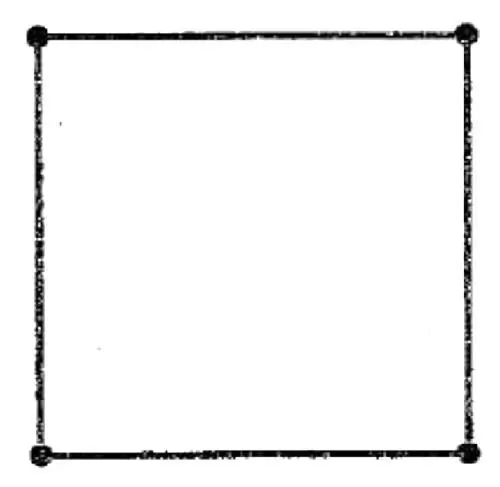As Mikhail Vasilyevich Lomonosov, the famous scientist of the 18th century, said, mathematics is the queen of all sciences. These words are one of the arguments in favor of the fact that everyone needs to know this subject. And geometry is one of the main "modules" of mathematics, which, in turn, is based on some fundamental knowledge and skills. One of them is the ability to define and distinguish various geometric and stereometric shapes from each other, for example, to be able to distinguish a rhombus from a square. And if you suddenly have problems with the last paragraph, then this article will help you.
First, consider these geometric shapes (rhombus and square) separately.
Basic properties of a rhombus

So, according to the definition, a rhombus is a parallelogram with all sides equal. A parallelogram is a polygon with 4 angles, with opposite sides parallel. As for the main properties of a rhombus, they are:
- The segments of the diagonals of the rhombus are mutually perpendicular to each other. This ismeans that the diagonals of the rhombus intersect at an angle of 90º.
- Segments of the diagonals of a rhombus lie on the bisectors of its corners. This means that the diagonals of the rhombus bisect its corners.
Basic properties of a square

The definition of a square is this: a square is a rectangle with all sides equal. In turn, a rectangle is a parallelogram in which all angles are right (that is, equal to 90º). The main properties of a square are listed below:
- The center of symmetry of a square is located at the intersection point of its diagonals. This means that the diagonals of the square, intersecting, are divided in half.
- The segments of the diagonals of the square are equal to each other.
- Segments of the diagonals of a square lie on the bisectors of its corners. This means that they bisect its corners.
What is the difference between a rhombus and a square
Let's finally answer this question. You may have already noticed numerous similarities both in the definitions and in the descriptions of the square and the rhombus. If we compare all the similarities and differences of the above-described geometric figures, we can easily see that they differ only in that a square, unlike a rhombus, has a degree measure of angles always equal to 90º. And already from this it follows that in a square, unlike a rhombus, the diagonals are always equal to each other. It can be concluded that a square is, in fact, a rhombus with right angles. But it's important to keep in mind that while every square is a rhombus, not every rhombus is a square.
If you have been careful, now you know whata rhombus differs from a square, which means you will be able to apply this knowledge in practice.






